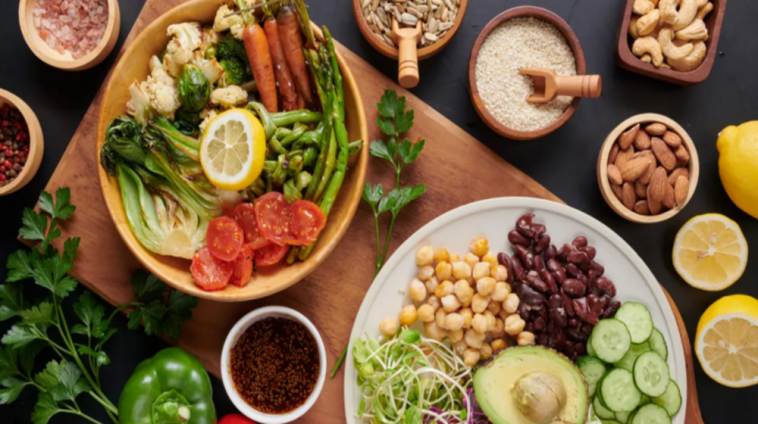Iron deficiency anemia is the most common type of anemia that affects pregnant and lactating women, women of reproductive age, infants, and adolescents. It is an important health problem that is highly prevalent in developing countries and puts a great burden on the health care systems. A poor diet or certain intestinal diseases can interfere with the body’s absorption of iron, which eventually leads to iron deficiency anemia. This article highlights the symptoms and causes of this health condition, and how to treat Iron Deficiency Anemia.
What is Iron Deficiency Anemia?
Anemia is a medical condition in which the number of red blood cells (RBCs) or their hemoglobin concentration is lower than normal. Hemoglobin is needed to carry oxygen, and a reduced number of RBCs will diminish the blood’s capacity to carry it to the tissues.
Iron deficiency anemia is mainly characterized by symptoms such as fatigue, weakness, dizziness, and shortness of breath.
Causes of Iron Deficiency Anemia
- Inadequate dietary intake, secondary to a poor diet without supplements.
- Inadequate absorption resulting from prolonged diarrhea, intestinal diseases such as celiac disease, atrophic gastritis, partial or total gastrectomy, or drug interference.
- An increased iron requirement in infancy, adolescence, pregnancy, and lactation that is not met with the dietary intake.
- Increased loss of blood because of excessive menstruation, hemorrhaging from an injury, bleeding hemorrhoids, esophageal varices, Crohn’s disease, ulcerative colitis, and parasitic or malignant diseases.
- Increased depletion of iron from iron stores in the plasma, which is caused by chronic inflammation or other chronic disorders.
- Nutritional deficiencies, particularly due to deficiencies of folate and Vitamins A and B12.
Symptoms of Iron Deficiency Anemia
Iron deficiency anemia is the end stage of microcytic anemia. Its symptoms, ranging from moderate to severe, include:
- Paleness
- Shortness of breath
- Dizziness
- Restless leg syndrome
- Cold hands and feet
- Fast or irregular heartbeat
- Brittle nails
- Headaches
How to Treat Iron Deficiency Anemia
The simple solution is to consume more iron-rich foods or iron supplements.
Iron Supplements
The chief treatment for iron deficiency anemia involves the oral administration of inorganic iron in the ferrous form. Healthcare professionals usually prescribe iron supplements three times daily for three months to treat iron deficiency.
Depending on the severity of the anemia and the patient’s tolerance, the recommended daily dose of elemental iron is 50 to 100 mg thrice a day for adults.
It is also advisable to take iron therapy for four or five months even after hemoglobin restoration to allow repletion of the body’s iron reserves.
Iron-Rich Foods

Haem iron and non-haem iron are the two types of iron found in food. Haem iron is an essential component of RBCs and transports oxygen in the body. It is found mainly in animal-based products and is absorbed more efficiently by the body than non-haem iron.
Non-haem iron is mostly found in plant-based products.
1. Animal-based Sources
Haem iron is the organic form of iron that is found in:
- Red meat (beef, mutton, lamb, veal)
- Organ meats (liver, kidney)
- Poultry
- Fish: (sardines, salmon, tuna)
- Eggs
2. Plant-based Sources
The absorption rate of non-haem iron is much lesser than haem iron and depends majorly on the presence of dietary enhancing factors, particularly vitamin C, meat, fish, and poultry.
Its sources include:
- Nuts and seeds
- Dry fruits
- Legumes (mixed beans, lentils, chickpeas)
- Dark leafy vegetables (spinach, broccoli)
- Fortified breakfast cereals
- Enriched rice or bread
- Tofu
| Animal-based Iron-rich Foods | Iron Content |
| 3 oz. beef, chicken liver, mussels, oysters | 3.5 mg |
| 3 oz. sardines | 2.1 mg |
| 3 oz. cooked chicken, turkey, veal | 0.6 mg |
| 3 oz. salmon, tuna, perch | 0.3 mg |
| Plant-based Iron-rich Foods | Iron Content |
| 1 cup cooked beans
1/2 cup tofu |
3.5 mg |
| 1/2 cup canned lima beans, red beans, chickpeas 1 cup dried apricots 1 oz. pumpkin, sesame, squash seeds |
2.1 mg |
| 1/2 cup cooked split peas
1 oz. peanuts, pecans, walnuts, pistachios, roasted almonds, roasted cashews, sunflower seeds 1 cup brown rice 1/2 cup dried raisins, peaches, prunes 1 cup spinach, 1 medium stalk of broccoli, 1 slice of bread |
0.7 mg |
How to Improve Iron Absorption from Food
Iron absorption depends greatly on the type of food and how it is prepared. Some foods increase iron absorption whereas others act as inhibitors.
Dietary Enhancers
Some foods help to increase the absorption of iron from iron-rich foods, and these factors are called dietary enhancers. Foods like vitamin C, meat, and fish improve the body’s absorption of dietary iron.
Iron-rich foods that are also good sources of vitamin C are grapefruit, kiwi, oranges, strawberries, guava, tangerines, tomatoes, and dark green leafy vegetables, They increase the body’s absorption of non-haem iron.
Dietary Inhibitors
Iron absorption can be inhibited to varying degrees by factors that bind to iron, including carbonates, oxalates, phosphates, and phytates. Factors found in vegetable fiber also inhibit non-haem iron absorption.
To absorb most of the iron in your food, avoid drinking coffee or tea and consuming calcium-rich foods or drinks with iron-rich foods. Such food items inhibit 50 percent of iron absorption.
Conclusion
Iron deficiency anemia is the most common type of anemia and is a serious health concern. The potential causes of developing anemia include nutritional deficiencies, blood loss, and the inability to absorb iron.
Consult your health care provider if you suspect you are anemic. Do not try to diagnose and treat iron-deficiency anemia yourself as you could end up with a misdiagnosis which can lead you to develop other health conditions such as constipation or even liver damage.







